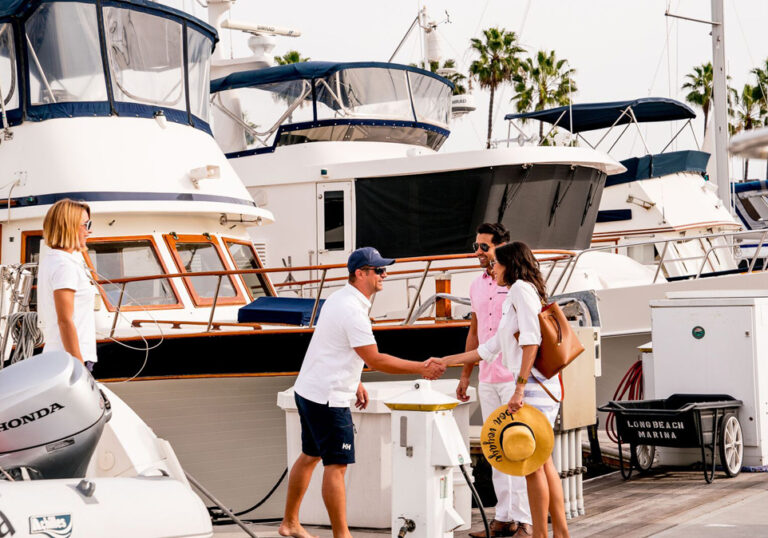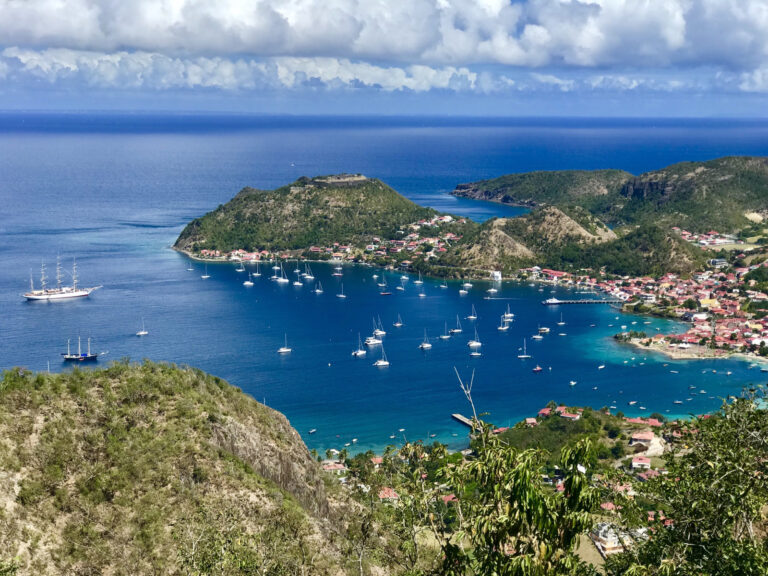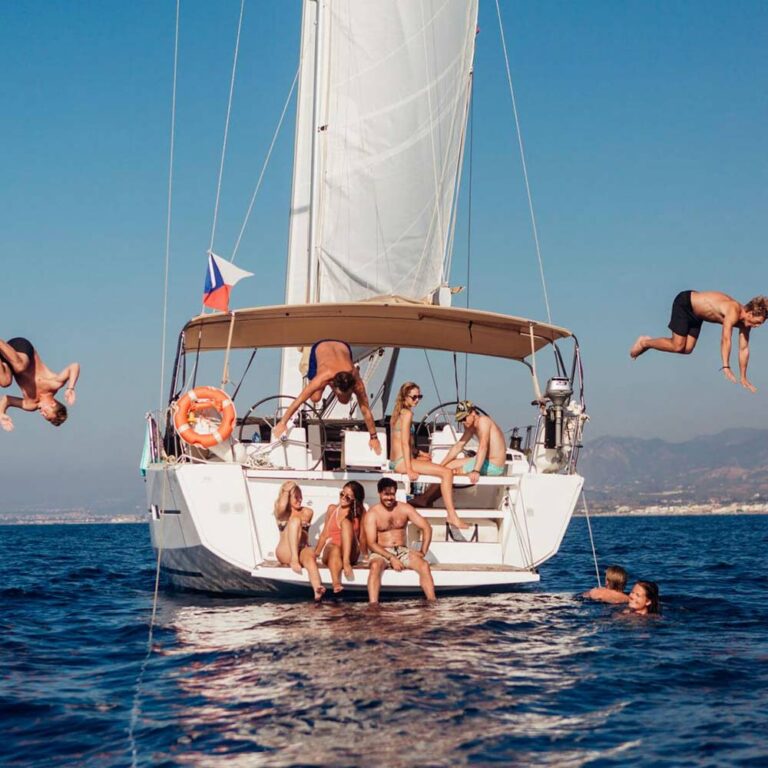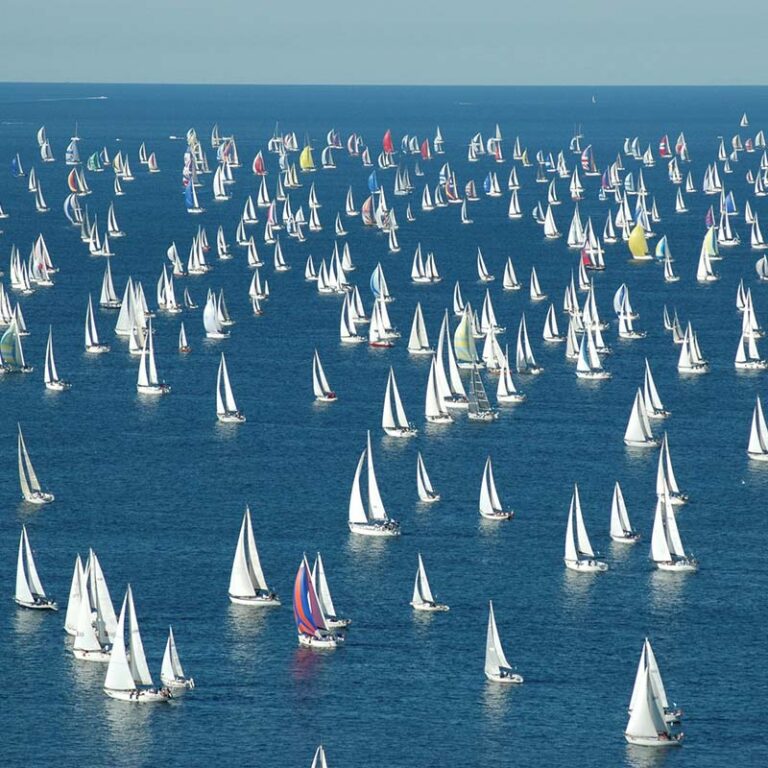
When it comes to anchoring, most people calculate the chain length based on experience, but we should take into consideration the wind and tide, Christopher Smith certifies in his article.
Anchorage is a key part of the captain’s arsenal. At least for those captains who don’t commit to going to the marina every evening. And although even a novice skipper understands, in general, the process of anchoring, some details require additional investigation. The calculation of the length of the anchor chain in various situations is one of them.
And to do this, it is necessary to have a universal rule that would be useful for safe anchoring in the vast majority of cases.
But it is impossible to place all the unknown variables into a single equation. Namely, due to this, many people might overlook very important details, as it is difficult to adapt them to the same simplified formula.
Wind
Almost every person has his/her own opinion on how long the anchor chain should be. And it is rarely using the entire chain you have.
This usually means using the maximum safe length, as there are some rocks in any anchorage, shallow water, or other boats, which have already been anchored or appeared after your arrival.
So, what then is the safe length? It is well-established, the ratio of water depth to the length of the anchor chain is used. RYA suggests this ratio should be at least 4:1, others say it is better to be 7:1, but in reality, it is quite common to use 3:1 in crowded anchorages.
This rule may be excellent in a static environment, but it is clearly not enough to consider the main forces acting o na boat, namely wind and tidal streams.
The wind is often the biggest problem. You must consider this and be prepared for the maximum expected strength of the wind.The problem is that virtually no articles or tutorials teach us about anchoring and tell us how to use the strength of the wind.
Therefore, I came up with a simple guide to this calculation based on practical experience, which takes into consideration both wind and tides.
If you can’t see anything more than an upper wind strength limit of 4 (16 knots) and you’re anchoring a 10-meter yacht in fairly shallow water (of about 8 meters), then 16 m + 10 m = 26 m of the chain will be sufficient for you. But if you expect a strong wind of 7 (33 knots) is coming, you should try installing 33 m + 10 m = 43 m of the anchor chain. This is as a general rule of thumb that works in most anchorages relatively close to shore where the water is fairly shallow, but for deeper anchorages (of nearly10 to 15 m), you will clearly need a longer chain.
Use a multiplier of 1.5 times exceeding the wind speed – this will give you the best result.
Such a formula should be used for shallow windsONLY (of 4 to 8 m depth).
Chain length (m) = wind speed (knots) + boat length (m)
The anchor length calculation: a rule of thumb
- A simple equation. The most common equation is wind strength + boat length = anchor chain length. This works for anchorages of up to 10 m deep. If the depth is higher, the wind strength should be multiplied by 1.5.
- Tide calculation. The tide should also be considered by converting the tidal force applied to the boat into the appropriate wind speed. By sailing in varying headwinds, monitoring engine RPM (rotation per minute), and then observing what boat speed provides the same RPM in calm conditions, the wind speed can be accurately converted to the tidal influx.
- Something else. It’s advisable to add about one extra length of the boat to our calculations to provide enough slack to counter yaw on the anchor without lifting the anchor up.
- Plan ahead.Make sure you consider not only the anchorage conditions upon arrival, but also what they may become. Is a significant increase in wind forecast? Is there a chance that the anchorage will become more crowded? How much tidal influx do you expect to pass through the anchorage in the case of the tide changes?

Anchor chain curvature
The curvature of the chain in the water, the contact line that transfers the lateral force from the boat to the sea bottom is a starting point for these calculations. Such math calculations are not fun, but for typical anchoring conditions, the contact line length turns out to be close to linear dependence on wind speed, but with a slope that only increases as the square root of a depth.
For shallow anchoring (5-8 m), the slope is close to one: the contact system length (m) = wind speed (knots). At deeper anchorages (of 15 m depth), the slope rises to 1.5 and further to 2 at a depth of 20 m.
The square root factor with a depth clearly shows that the volume concept is mistaken. For example, to anchor in a depth of4 m with present or expected wind strength of 5, you will need a chain length of 32 m, with a ratio of almost 8:1.
The length of the anchor chain you use in calm conditions should be different from that one you need in strong wind.
According to Rod Haykel, you should forget the commonly advertised 3:1 ratio and choose at least 5:1, and if there is a pitch, then choose even more.
The wind strength also depends on the sail shape of the boat. You can measure this on your boat by evaluating the length of the chain lifted at a given wind speed (V) and a depth (D) using the formula: the chain length = f.V.√D.
My calculation for shallow anchorages is based on my boat (Jeanneau Espace of 10.4 m length and a chain of 10 mm long) and a depth of 6m. The values will be approximately the same for most mass-producible yachts assuming the chain size increases with the boat size.
The chain on the sea bottom
So, we can calculate the length of the chain.But how do we know that it is enough?
Years of sailing to see an anchor in the warm waters of the Mediterranean Sea convinced me that the optimal chain length is the contact line length plus the boat length.
This provides a buffer to counteract yaw on the anchor without a direct upward pull on the anchor.
In addition, the length of the chain, laid in sand or mud, significantly reduces the pulling force on the anchor. Thus, my best guess is that the total circuit = the contact line length + the boat length.
Some people say that to sink the anchor to the sea bottom, the chain must be upward-sloping, that is, with a length slightly less than that one of the contact line. But that is exactly why, after anchoring, we use the motor in the opposite direction to raise the angle of the chain and lower the anchor.
The holding capacity of the anchor is not considered here. This is important and discussed in many other articles.
Tidal influxes
Resistance to tidal influxes is a second force acting on your boat. It’s strange but you can easily measure this yourself.
On a windy day, move slowly down the wind, slowdown your engine RPM and find the engine RPM that just balance the wind strength. Then, on a calm day, please notice the boat speed generated by the same RPM.
On my boat, at full wind strength of 4, 1,200RPM is required to balance the wind strength, while in the calm sea, 1,200 RPM gave a speed of 4.2 knots above the surface. So, a tidal influx of 4.2 knots would correspond to a wind strength of 16 knots, which would require a 16-meter chain to balance, i.e. about 4 m of the chain per knot.
Therefore, we have a more complete formula now.
Anchor chains are usually marked every 10meters; so, the practical approach is to round up the calculations to the nearest 10 meters of the chain.
Adding a boat length of 10 m gives an easy-to-use table (below).

It seems uncommon that so little attention is given to how to consider the wind strength in all the articles concerning anchoring and discussions of a chain length.
Yes, there are many articles about the anchor chain length for computer geeks, but there are still few attempts to apply it in sailing practice. I hope at least to awaken your thoughts on how to choose the appropriate length of the anchor chain here.
After all, it is not really hard.
The wind and tide formula for shallow anchorages (of 4 to 8 m depth)
Chain length (m) = wind speed (knots) + 4 x water speed + boat length (m)




